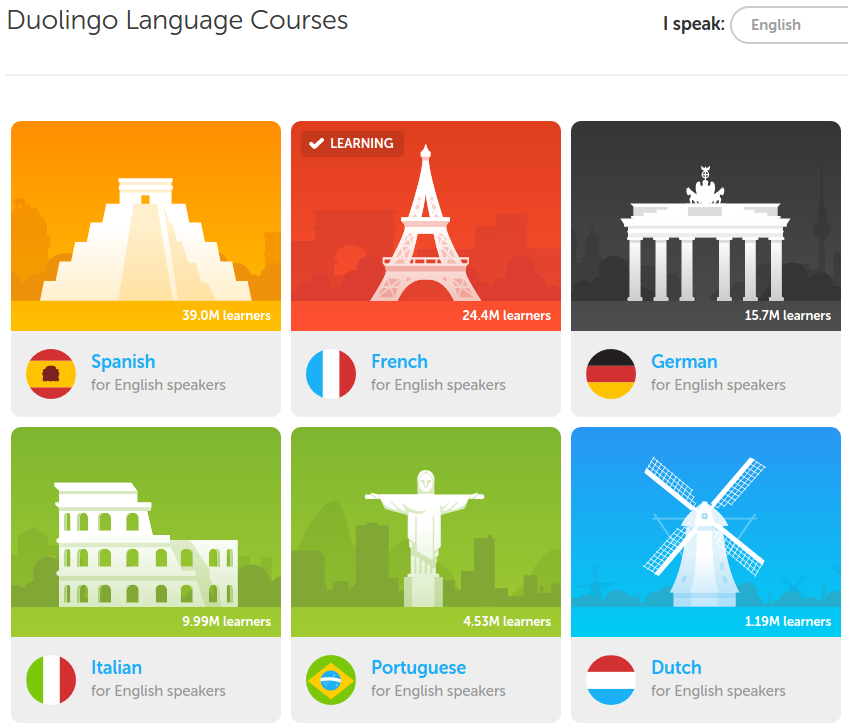Duolingo – online language course
I used Duolingo regularly for a couple of months. It was good fun, so why did I stop?
What is DuoLingo?
As the Duolingo website says “Learn languages completely free, without ads or hidden charges. It’s fun, easy, and scientifically proven.”
They even have some evidence that their approach is faster than an average university course.
I used their French course, using English as the starting language.
According to https://www.duolingo.com/courses, for English speakers they have Spanish (39 million learners), French (24.4 million learners), German, Italian, Portugues, Dutch (my own language, with 1.2 million learners) and 5 other languages. Another 11 languages (including Star Trek’s Klingon) are currently “hatching”.

For other source languages there are less target languages. For instance, for Dutch speakers there is only one course, in English.
How does it work?
Starting with the absolute basics, you go through a learning tree. So completing one lesson (or a set of lessons) unlocks the next lesson(s). This gives you some freedom, but stops you from getting too far ahead of yourself.

You can see your progress on each lesson/topic (e.g. food, phrases, animals, colours, present, pronouns) – whether you completed it, and whether your knowledge has started to fade. One of the key elements is the idea of repetition and memory fading. Duolingo makes sure that you keep refreshing what you already know.
You can use Duolingo online or as an iOS, Android or Windows Phone app.

Each individual lesson consists of a number of questions. Duolingo will keep asking you questions until you’ve reached a score of 10. Questions can be a translation from English to French or vice versa, putting words to pictures and transcribing French sentences
My impressions
The screens have a modern, fresh and inviting feel to them. Information (language syntax, conjugations, vocabulary) is there when you need it, but without being obtrusive
Lessons are short, giving you regular ‘hits’ as you progress through the lessons. And there is a nice balance between variety and repetition, keeping things interesting without overwhelming you.
I suspect that (some of) the sentences are automatically generated, with some funny results like “Je suis une pomme” – “I am an apple”.
For a while I progressed nicely through Duolingo, making sure to spend a bit of time each day on it. It was fun to see how much I already knew and to fill in the gaps…. until I hit a lesson with lots of new words. It became less of a game and too much like school (rote learning). There are so many different ways to learn French, and in the end Duolingo isn’t quite for me, although I may come back to it from time to time to solidify my learning
All in all I recommend that you try out Duolingo. As formal learning goes it is a pleasure to use
